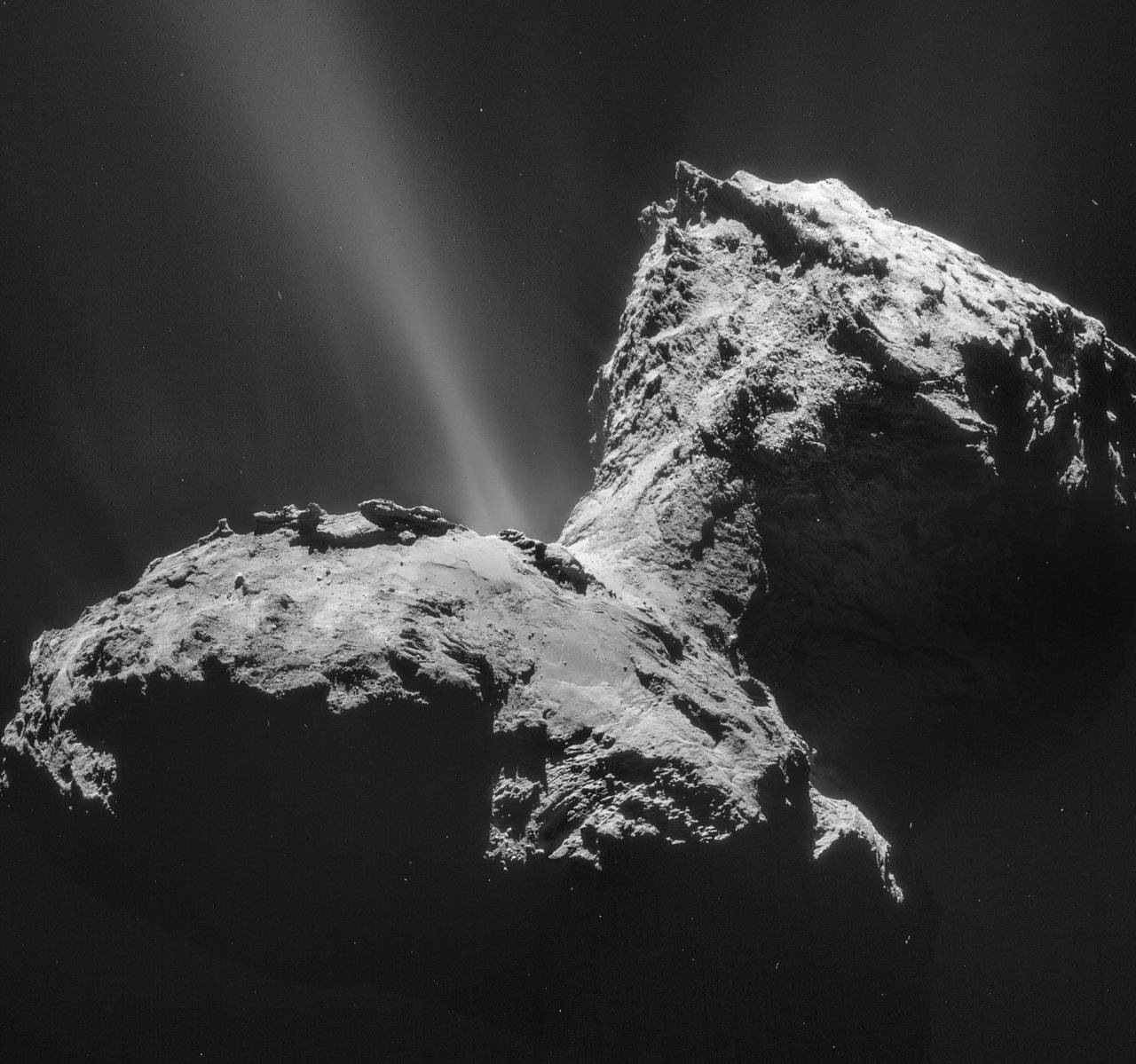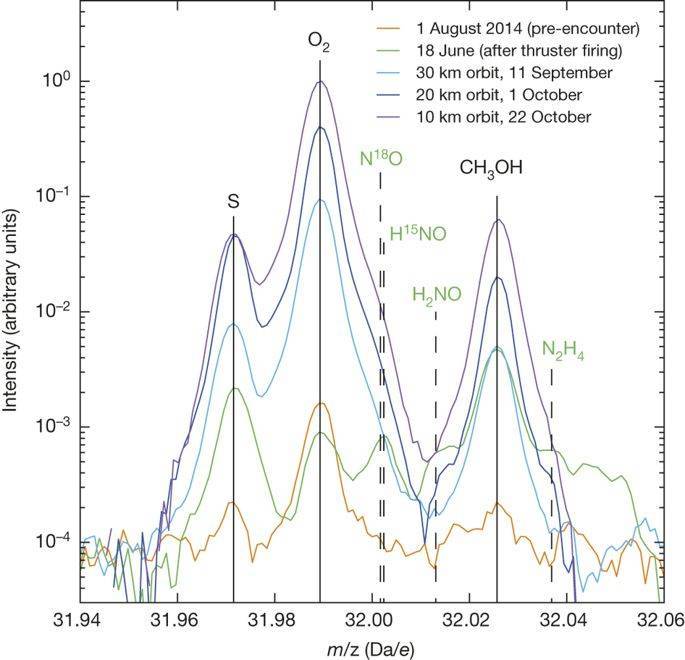Linking interstellar and cometary O2: a deep search for molecular oxygen in a solar-type protostar
Recent measurements carried out at comet 67P/Churyumov–Gerasimenko (67P) (see Fig. 1) with the Rosetta probe revealed that molecular oxygen, O2, is the fourth most abundant molecule in comets with an abundance of ~ 4 % with respect to water. Cometary O2 is thought to have a primordial nature, i.e. coming from the interstellar cloud from which our Solar system was formed. Astrochemical models coupled with physical models favour a dark cloud (or ‘primordial’) origin for O2 in comets, albeit for dark clouds which are warmer and denser than those usually considered as Solar system progenitors. However, gaseous O2 has been extensively searched in the interstellar medium with little success. Indeed, O2 has been detected towards only one quiescent molecular cloud, in the ρ Oph A core thanks to the far-IR/sub-mm Odin and Herschel Space Observatories.


Fig.1: Comet 67P/Churyumov-Gerasimenko on Jan. 31, 2015. Image Credit: ESA/Rosetta/NAVCAM – CC BY-SA IGO 3.0 (left panel) and ROSINA/DFMS mass spectra around 32 Da/ normalized to the spectrum with the largest signal (right panel).
A group of researchers - led by the Astrofit2 fellow Vianney Taquet and including Claudio Codella from the Osservatorio Astrofisico di Arcetri - performed a deep search for molecular oxygen towards the warm compact gas surrounding the nearby Class 0 protostar IRAS 16293–2422 B with the ALMA interferometer (see Fig.2 ). ALMA is the most powerful radio telescope in the World located on the Atacama plateau in Chile at 5000 meters of altitude. Because of the high abundance of molecular oxygen in the Earth’s atmosphere, regular O2 is not observable from the Earth and the rarer 16O18O isotopologue has been targeted instead together with its chemical daughters HO2, and H2O2.

Fig.2: The antennas of the ALMA interferometer located on the Atacama plateau in Chile at 5000 meters of altitude.
Unfortunately, the targeted 16O18O transition is surrounded by two brighter transitions at ±1 km s−1 relative to the expected 16O18O transition frequency. After subtraction of these two transitions, residual emission at a 3σ level remains, but with a velocity offset of 0.3−0.5 km s−1 relative to the source velocity, rendering the detection only “tentative” (see Fig.3 and Fig. 4). The O2 abundance found in IRAS16293 can be nevertheless be compared with the abundance found in comet 67P assuming two excitation temperatures Tex of 125 and 300 K, as indicated by other molecules. Assuming that 16O18O is not detected and using methanol CH3OH as a reference species, we obtain a [O2]/[CH3OH] abundance ratio lower than 2−5, a three to four times lower abundance than the [O2]/[CH3OH] ratio of 5−15 found in comet 67P. Such a low O2 abundance could be explained by the lower temperature of the dense cloud precursor of IRAS16293 with respect to the one at the origin of our solar system that prevented efficient formation of O2 in interstellar ices.

Fig.3: Observed spectrum (in blue) around the 16O18O transition at 233.946098 GHz towards the continuum peak position of IRAS16293 B. Red and green lines show the best-fit curves to the data assuming a Gaussian profile and the profile from the CH3NCO transition at 234.08809 GHz, respectively. Residual spectra of the best-fit Gaussian and reference transition profiles are shown below the observed spectra in red and green, respectively showing the weak emission potentially attributed to 16O18O.

Fig. 4: Residual map of the integrated intensity emission between 2.8 and 3.2 km s−1 after subtraction of the fit performed with the line profile of the reference transition. Contours are in steps of 3σ, with σ of 0.54 mJy beam−1 km s−1. The red star symbols depicts the position of the IRAS16293 B continuum peak.
The results of this work have been recently published in the journal Astronomy & Astrophysics (Taquet et al. 2018, A&A, 618, 11).



